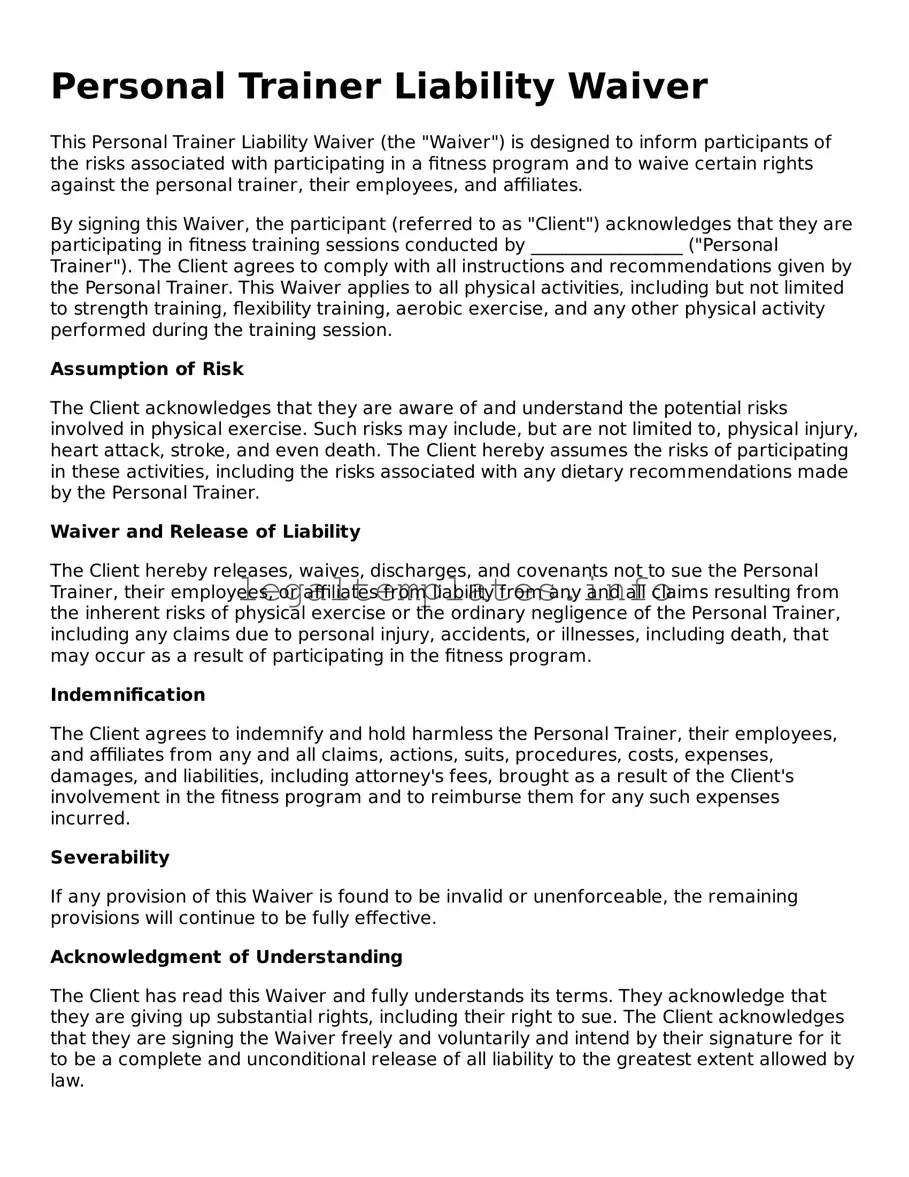Personal Trainer Liability Waiver
This Personal Trainer Liability Waiver (the "Waiver") is designed to inform participants of the risks associated with participating in a fitness program and to waive certain rights against the personal trainer, their employees, and affiliates.
By signing this Waiver, the participant (referred to as "Client") acknowledges that they are participating in fitness training sessions conducted by _________________ ("Personal Trainer"). The Client agrees to comply with all instructions and recommendations given by the Personal Trainer. This Waiver applies to all physical activities, including but not limited to strength training, flexibility training, aerobic exercise, and any other physical activity performed during the training session.
Assumption of Risk
The Client acknowledges that they are aware of and understand the potential risks involved in physical exercise. Such risks may include, but are not limited to, physical injury, heart attack, stroke, and even death. The Client hereby assumes the risks of participating in these activities, including the risks associated with any dietary recommendations made by the Personal Trainer.
Waiver and Release of Liability
The Client hereby releases, waives, discharges, and covenants not to sue the Personal Trainer, their employees, or affiliates from liability from any and all claims resulting from the inherent risks of physical exercise or the ordinary negligence of the Personal Trainer, including any claims due to personal injury, accidents, or illnesses, including death, that may occur as a result of participating in the fitness program.
Indemnification
The Client agrees to indemnify and hold harmless the Personal Trainer, their employees, and affiliates from any and all claims, actions, suits, procedures, costs, expenses, damages, and liabilities, including attorney's fees, brought as a result of the Client's involvement in the fitness program and to reimburse them for any such expenses incurred.
Severability
If any provision of this Waiver is found to be invalid or unenforceable, the remaining provisions will continue to be fully effective.
Acknowledgment of Understanding
The Client has read this Waiver and fully understands its terms. They acknowledge that they are giving up substantial rights, including their right to sue. The Client acknowledges that they are signing the Waiver freely and voluntarily and intend by their signature for it to be a complete and unconditional release of all liability to the greatest extent allowed by law.
The Client's participation in the fitness program is subject to the approval of the Personal Trainer.
Client Information:
- Client Name: ___________________________________
- Date of Birth: __________________________________
- Address: _______________________________________
- Phone Number: _________________________________
- Email: _________________________________________
Agreement to the Terms and Conditions:
I, the undersigned, agree to the terms and conditions outlined in this Waiver on ______________ (date).
Client's Signature: ________________________________
Date: ______________
This document does not constitute legal advice and may need to be modified to ensure compliance with local laws and personal training certification guidelines. It is recommended that the Personal Trainer consult with a lawyer to ensure that this Waiver meets all legal requirements applicable in their jurisdiction.
